Kōgei Decorative Arts: from Traditional to Modern
Craft Tour Guide
Words by Mari Hashimoto

The world of kōgei (decorative crafts) encompasses both traditional crafts and more modern works fused with contemporary art. This article introduces some places and events where you can view, learn about and experience the rich diversity of kōgei.
Map (Toyama, Ishikawa & Fukui)

GO FOR KOGEI
Held in Toyama, Ishikawa, and Fukui, three prefectures in the Hokuriku region, GO FOR KOGEI was launched in 2020 as a platform to communicate the appeal of contemporary kōgei. Through exhibitions and other related programs, the festival provides an opportunity for visitors, artists and local residents to rediscover the essential nature of these areas and the enduring appeal of kōgei rooted in local materials, techniques and climates. The 2023 event was followed by KOGEI Art Fair Kanazawa, a sister program and Japan’s only art fair dedicated to crafts, with the fair held at Hyatt Centric Kanazawa over December 1 to 3, 2023 (https://kogei-artfair.jp/).



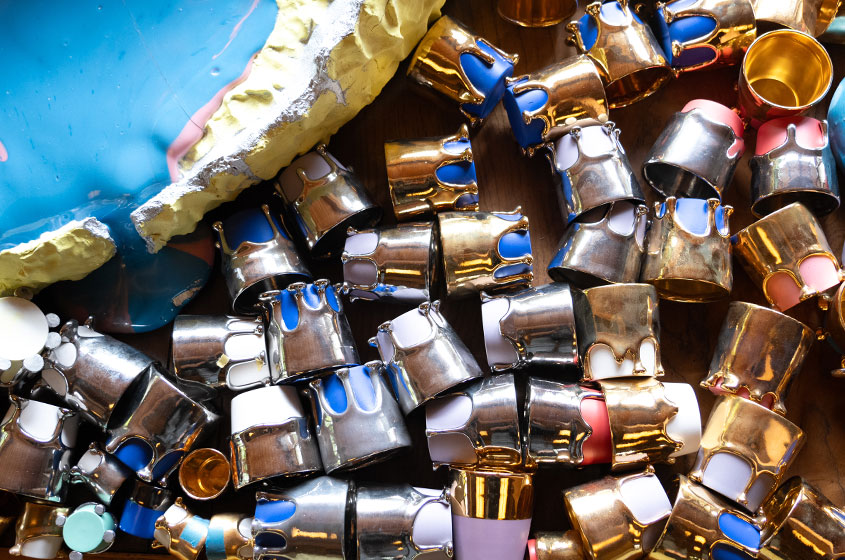
GO FOR KOGEI
- Time
- Friday, September 15th−Sunday, October 29th, 2023
10:00 a.m.–4:30 p.m. (Last admission is 4:00 p.m.) - Place
- Multiple venues along the Fugan Canal, Toyama City, Toyama Prefecture
- Admissions
- General Admission: ¥2,500 (Advance purchase: ¥2,000)
High School Students: ¥1,500 (Advance purchase: ¥1,000) - Link
- https://goforkogei.com/en/
National Crafts Museum
The National Crafts Museum opened in Tokyo’s Kitanomaru Park in 1977 as the Crafts Gallery at the National Museum of Modern Art, Tokyo. It is the only Japanese art museum that specializes in crafts and design objects. The museum relocated from Tokyo to Kanazawa, Ishikawa Prefecture, in 2020. As a hub for the extensive collection, preservation and study of constantly-evolving crafts and design objects, the National Crafts Museum serves as a bridge connecting crafts from the past to the future. The museum actively plans and stages challenging exhibitions, such as 2023’s POKÉMON X KOGEI Playful Encounters of Pokémon and Japanese Craft (now ended). The museum utilizes two relocated and reconstructed wooden army facilities: The Old 9th Division Command Headquarters - originally built in 1898 as the 9th Division’s executive office - and The Old Army Generals Club - originally built in 1909 as a meeting place for officers.

Photo:Takumi Ota

Photo:Takumi Ota

National Crafts Museum
- Place
- 3-2 Dewa-machi, Kanazawa, Ishikawa 920-0963, Japan
- Time
- 9:30 AM–5:30 PM
-admission until 5:00 PM.
-Opening hours may vary depending on the exhibition. - Closed
- Mon. (open on holiday Mon. and closed on the following days), during installation periods and New Year holidays
- Admissions
- Adults
Individuals 300 yen
Groups (20 persons or more) 250 yen
College/University students
Individual 150 yen
Groups (20 persons or more) 70 yen
Free for high school students, under 18, seniors (65 and over), and persons with disability and one person accompanying. - Link
- https://www.momat.go.jp/craft-museum/en
21st Century Museum of Contemporary Art, Kanazawa
Located in the center of Kanazawa City, 21st Century Museum of Contemporary Art, Kanazawa opened in 2004 based on the architectural concept of a “Museum open to the city like a park.” The museum is renowned across the world as the new face of Kanazawa. Its Mission Statement discusses how the museum will explore the values that Kanazawa’s distinctive cultural traditions (including kōgei) will have in this new era. One spark behind the current kōgei boom was Art Crafting towards the Future (2012), an exhibition planned and curated by Yuji Akimoto, then the museum’s director and now the executive director of GO FOR KOGEI. In addition to its permanent exhibits, the museum also stages numerous special exhibitions, learning programs and art projects. Please check the museum’s website for details. The museum building was designed by Kazuyo Sejima + Ryue Nishizawa/SANAA.

Courtesy: 21st Century Museum of Contemporary Art, Kanazawa

Courtesy: 21st Century Museum of Contemporary Art, Kanazawa

21st Century Museum of Contemporary Art, Kanazawa
- Place
- 1-2-1 Hirosaka, Kanazawa City, Ishikawa, Japan
- Time
- Exhibition Zone :
10:00 – 18:00 *Open until 20:00 on Fridays and Saturdays
Public Zone :
9:00 – 22:00
*Open until 21:00 on Fridays and Saturdays - Closed
- Exhibition Zone :
Mondays
*When Monday is a national holiday, closed on the following weekday instead.
New Year Holidays
Public Zone :
New Year Holidays - Admissions
- Admission to the museum building is free.
Admission to the exhibition zone is charged.
Fees vary depending on the exhibition. - Link
- https://www.kanazawa21.jp/en/
Toyama Prefectural Museum of Art and Design
Toyama Prefectural Museum of Art and Design opened in 2017 based on a founding concept of “Bridging Art and Design.” It inherited the collection of its predecessor, The Museum of Modern Art, Toyama, which includes modern art, posters, chairs and other objects from the 20th century onwards. From the Museum’s rooftop garden, visitors can look over Kansui Park, with the magnificent Tateyama mountain range also visible in the background. The Museum stages permanent and special exhibitions in six exhibition rooms found on the second and third floors. Its permanent exhibitions include the Shuzo Takiguchi Collection, which features objects and artworks collected by the late Toyama art critic and poet Shuzo Takiguchi, and the Szymon Goldberg Collection, which looks back over the life of Szymon Goldberg, a pianist who spent his last years in Toyama City. The museum was designed by Hiroshi Naito.

Onomatopoeia Rooftop

Photo:Yoshikazu Kosugi

Onomatopoeia Rooftop
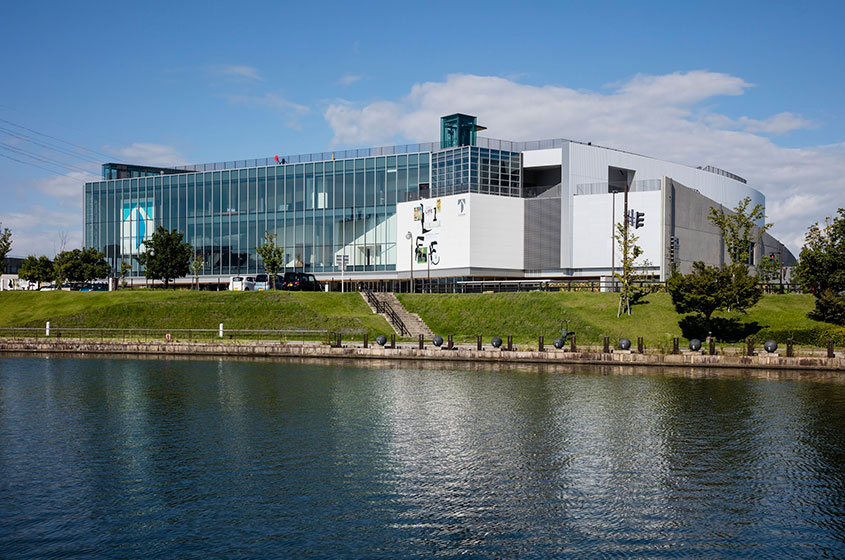
Toyama Prefectural Museum of Art and Design
- Place
- 3-20 Kibamachi, Toyama 930-0806 Japan
- Time
- Museum
9:30-18:00
(Admission until 17:30)
Onomatopoeia Rooftop
8:00-22:00
(Admission until 21:30) - Closed
- Museum
Wednesdays (Except national holidays)
When Wednesday is a national holiday, closed on the following weekday. New Year’s holidays
Onomatopoeia Rooftop
December 1 – March 15 - Admissions
- Collection Exhibition
Adults ¥300 (¥240)
*For groups of 20 people or more, admission fees in ( ) are applied.
Special Exhibition
Exhibition admission fees vary depending on the exhibition.
*Tickets for the special exhibitions also include admission to the collection exhibition.
Free admission both to collection exhibitions and special exhibitions for the following visitors.
Children, students (elementary, junior high or high school students, etc.)
Persons escorting children/students for school activities or social activities. (Submission of admission free application is necessary.)
Disabled people with a physical disability certificate.
For seniors (70 and above) and university students or younger, admission to collection exhibitions is free. - Link
- https://tad-toyama.jp/en/
Toyama Glass Art Museum
Toyama Prefecture’s connection with medical products dates back to the Edo period, when the Toyama Domain officially encouraged the sale of medicines. This growth of pharmaceuticals as a major industry also led to the booming production of glass medicine bottles during the Meiji and Taisho eras. With this history as “Glass Art City,” Toyama has developed policies to nurture human resources, facilitate the industrialization of glass, and promote art, with these initiatives pursued with three full-fledged facilities as bases: Toyama Institute of Glass Art, Toyama Glass Studio, and Toyama Glass Art Museum. Since its opening in 2015, Toyama Glass Art Museum has uniquely focused on contemporary glass works from the 1950s onwards. Its Glass Art Garden on the 6th floor also displays installations from the studio of the great master of contemporary glass artwork, Dale Chihuly. The Museum building was designed by Kengo Kuma.


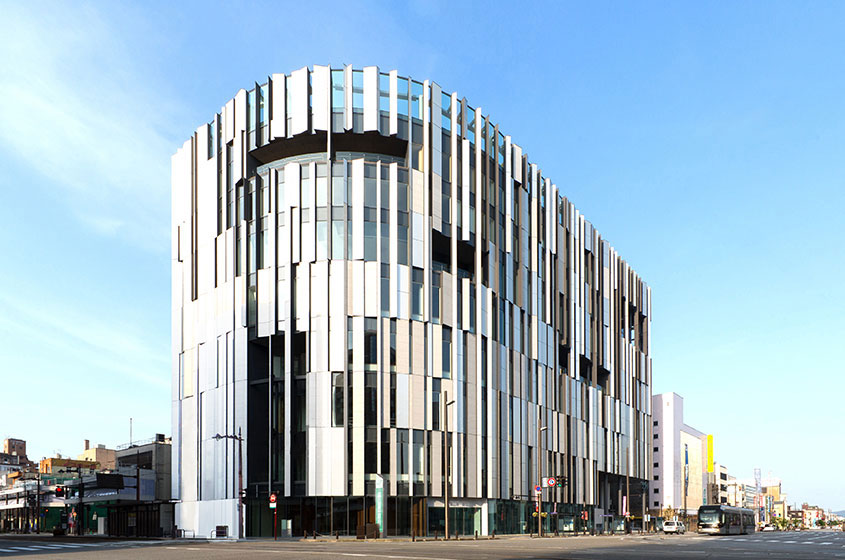
Toyama Glass Art Museum
- Place
- 5-1 Nishicho, Toyama City, Toyama 930-0062, Japan
- Time
- Permanent Exhibition / Special Exhibition
9:30-18:00
(until 20:00 on Fridays and Saturdays) - Closed
- Permanent Exhibition / Special Exhibition
First and Third Wednesdays, Year-end & New Year holidays - Admissions
- Permanent Exhibition Admission
General Public, College Student ¥200 (¥170)
( ) is for groups of 20 people or more.
*Permanent Exhibition tickets grant entrance to the Collection Exhibition and the Glass Art Garden.
*Admission fee for Special Exhibitions will vary. - Link
- https://toyama-glass-art-museum.jp/en/
RENEW
Held across Fukui Prefecture in Sabae City, Echizen City, and Echizen Town, RENEW aims to build sustainable communities by opening up the region’s ateliers to the general public, with the 9th RENEW held in 2023. During the event period, visitors are welcomed to ateliers and business involved in seven local industries: Echizen lacquerware, Echizen washi paper, Echizen forged knives, Echizen tansu storage cabinets, Echizen pottery, reading glasses, and textiles. Through tours and workshops, visitors can learn about the backgrounds and ideas of the craftspeople while also practicing craft techniques themselves, with craft products also on sale. Furthermore, the shop-style exhibition City/People/Work – Localism Expo Fukui – is also held concurrently to introduce socially-significant activities carried out in local economic zones across Japan.




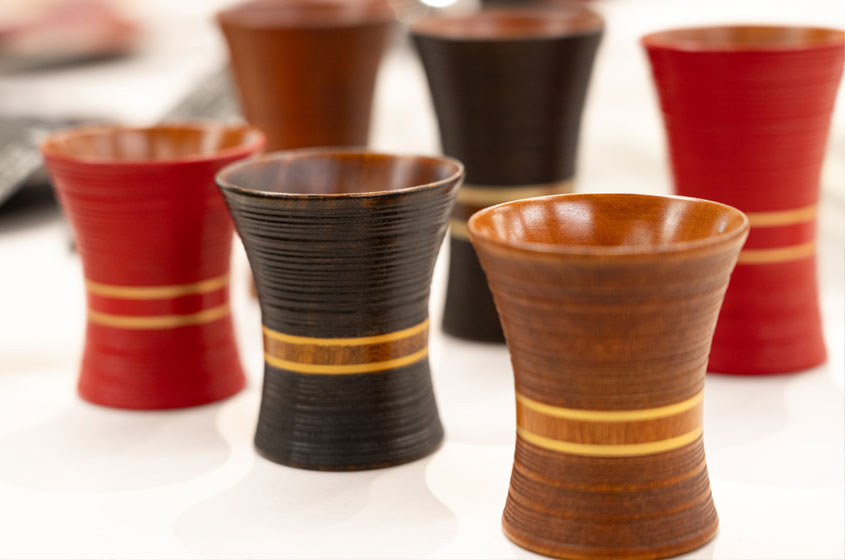
RENEW
- Time
- Friday, October 6th−Sunday, October 8th, 2023
- Link
- https://renew-fukui.com/
MOA Museum of Art
MOA Museum of Art opened in Atami, Shizuoka Prefecture, in 1982 under the aegis of the Mokichi Okada Art and Culture Foundation. Based on the collection of the late Mokichi Okada, the museum collects masterpieces of Japanese art that span genres such as painting, calligraphy, sculpture and kōgei. The museum’s collection currently contains around 3,500 items, including three National Treasures and 67 Important Cultural Properties. The museum has ten exhibition rooms, a Noh theater, a faithful replica of the Golden Tea Room erected by the warlord Toyotomi Hideyoshi, the Ippaku-an and Shotei teahouses, the Cha no Niwa garden, and Korin’s Residence (a reconstruction of the residence of the artist Ogata Kōrin), as well as several restaurants and cafes. The museum’s exhibition rooms and some other sections were renovated in 2017, with the renovation work carried out by New Material Research Laboratory, a firm founded by the contemporary artist Hiroshi Sugimoto and the architect Tomoyuki Sakakida.




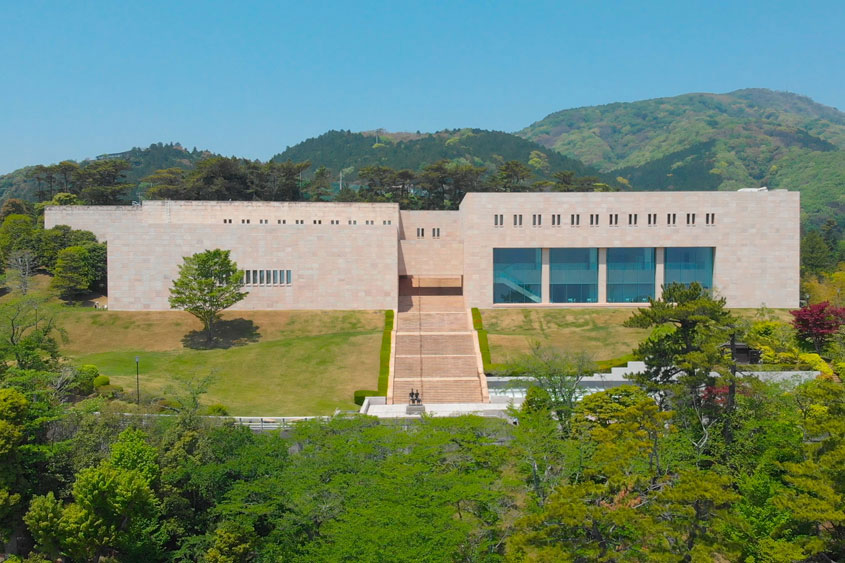
MOA Museum of Art
- Place
- 26-2 Momoyama-cho, Atami, Shizuoka 413-8511
- Time
- 9:30 to 16:30 (last admission at 16:00)
- Closed
- Closed on Thursdays(except national holidays)
*May close at other times for exhibition preparation. Please inquire for further information. - Admissions
- Adults 1,600 yen (1,300)
High school/college students (ID required) 1,000 yen (700)
Children up to junior high school Free of charge
Seniors aged over 65 (ID required) 1,400 yen
Persons holding disability identification800 yen
*Prices in brackets apply to groups of 10 people or more.
*Concessions cannot be combined.
*Student/senior concession requires presentation of proof of age.
*Seniors concession is applicable to visitors aged 65 or over (ID required).
*Concession is available to one person accompanying persons with a disability certificate (presentation of the disability certificate required). - Link
- https://www.moaart.or.jp/en/

